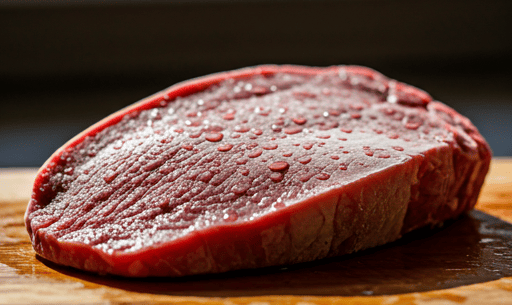Unilever's Innovation in Plant-Based Meat Analogues
SUSTAINABILITYALTERNATIVE PROTEINS


The shift toward sustainable, plant-based foods continues to gain momentum, with growing consumer interest in meat analogues that closely replicate the taste, texture, and nutritional benefits of animal meat. Unilever's recent patent application showcases an advanced approach to achieving this goal, leveraging innovative binding technologies that elevate the quality of plant-based meat alternatives.
The Challenge with Current Meat Analogues
Meat is revered not only for its rich taste and texture but also for its nutritional value, providing essential amino acids, vitamins (e.g., B12), and minerals. However, excessive meat consumption has health implications, largely due to cholesterol and saturated fat content. Beyond health concerns, environmental sustainability and ethical considerations have fueled the search for non-meat protein sources.
Despite advancements, plant-based meat analogues have struggled to match the firmness, elasticity, and mouthfeel of real meat. Current solutions often rely on additives like methylcellulose, which, though effective, fail to meet consumer demand for clean-label products—those made with recognizable, minimally processed ingredients.
Unilever's Invention: A Cellulose-Based Binder
Unilever's invention addresses these limitations through a unique binder formulation that combines cellulose microfibrils and thermally gelling non-animal proteins. This binder enhances the structure, elasticity, and mouthfeel of plant-based meat products, delivering a sensory experience closer to real meat.
Key Components of the Innovation
The patent application describes a meat analogue composed of:
Hydrated Texturized Non-Animal Protein Pieces (25–75 wt.%): These pieces form the core protein structure, made from sources such as legumes, cereals, tubers, and oilseeds.
Binder (20–70 wt.%): The binder is the defining element of the invention, comprising:
Thermally Gelling Non-Animal Proteins (3–35 wt.%): Proteins that form gels upon heating, adding firmness and elasticity.
Cellulose Microfibrils (0.1–6 wt.%): A plant-derived fiber that creates a finely dispersed network, mimicking the texture and structure of meat.
Polysaccharides (0–20 wt.%): Optional components that enhance texture and stability.
Water (20–95 wt.%): Hydrates the binder, ensuring proper consistency.
Key Benefits of the Binder
The finely dispersed cellulose microfibrils are pivotal to the binder's success. The uniform distribution (measured by the Composition Homogeneity Parameter, or CHP, of ≥0.05) imparts:
Improved Elasticity: The analogues replicate the chewiness of meat.
Thermal Stability: They retain shape and texture during cooking.
Juiciness and Mouthfeel: The fat-like texture enhances the sensory experience.
A Sustainable and Clean-Label Solution
Unilever’s use of cellulose microfibrils—a naturally derived fiber from sources such as citrus, tomato, and sugar beet—aligns with the clean-label trend. This replaces chemically modified ingredients like methylcellulose with a minimally processed alternative, appealing to health-conscious and environmentally aware consumers.
Method of Preparation
The patented process involves four key steps:
Preparation of Cellulose Microfibril Dispersion: High-shear treatment (e.g., high-pressure homogenization) creates a uniform dispersion.
Binder Formation: The dispersion is combined with thermally gelling proteins under high-shear conditions, achieving the required homogeneity (CHP ≥0.05).
Combination with Protein Pieces: The binder is mixed with hydrated texturized protein to form a cohesive dough.
Shaping and Processing: The dough is shaped into meat analogue forms, ready for cooking or further processing.
Applications and Implications
This innovation opens doors to a variety of plant-based products, including burgers, sausages, and meatballs, with unmatched texture and sensory properties. It also caters to diverse dietary preferences, being vegan-friendly and adaptable for various cuisines. As plant-based diets continue to rise, innovations like this pave the way for a sustainable and delicious future.
